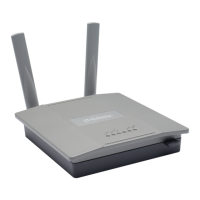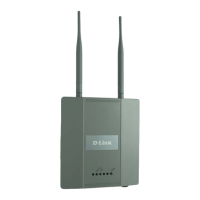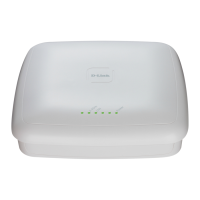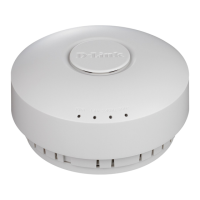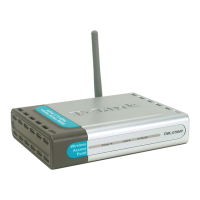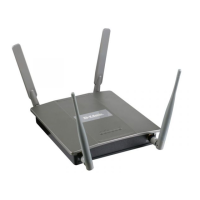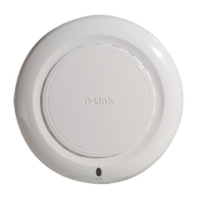Basic Setup
D-Link Unified Wired and Wireless Access System
Oct. 2015 Page 564
D-Link UWS User Manual
Configuring AP Security
The Default AP profile does not use any security mechanism by default. To protect your network, D-Link
strongly recommends that you select a security mechanism so that unauthorized wireless clients cannot gain
access to your network.
From the VAP tab of the Wireless Network Configuration page, you can select None, WEP or WPA/WPA2 as
the WLAN security mechanisms, as the following figure shows. The default is None.
Figure 362: AP Network Security Options
The following sections describe the security mechanicians.
Using No Security
If you select None as your security mode, no further options are configurable on the AP. This mode means that
any data transferred between the AP and the associated wireless clients is not encrypted, and any wireless
client can associate with the AP.
This security mode can be useful during initial network configuration or for problem solving, but it is not
recommended for regular use on the internal network because it is not secure.
Using Static or Dynamic WEP
Wired Equivalent Privacy (WEP) is a data encryption protocol for 802.11 wireless networks. If you select this
security mechanism, all wireless clients and access points on the network are configured with a 64-bit (40-bit
secret key + 24-bit initialization vector (IV)) or 128-bit (104-bit secret key + 24-bit IV) Shared Key for data
encryption.
Static WEP is not the most secure mode available, but it offers more protection than setting the security mode
to None as it does prevent an outsider from easily sniffing out unencrypted wireless traffic.
Dynamic WEP is more secure than Static WEP, but you need a RADIUS server to manage the dynamically
generated keys.
WEP encrypts data moving across the wireless network based on a static key. (The encryption algorithm is a
stream cipher called RC4.)
Caution! The IEEE 802.11n standard prohibits static WEP and dynamic WEP (IEEE802.1X) security
modes. If APs on your network use a profile that includes the 802.11n radio mode, do not configure
the profile with networks that uses static or dynamic WEP as the security mode.

